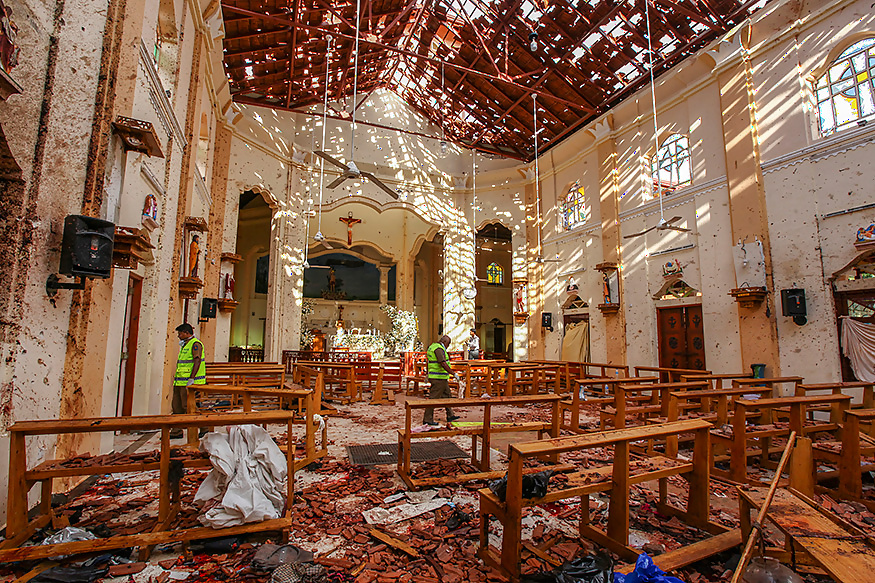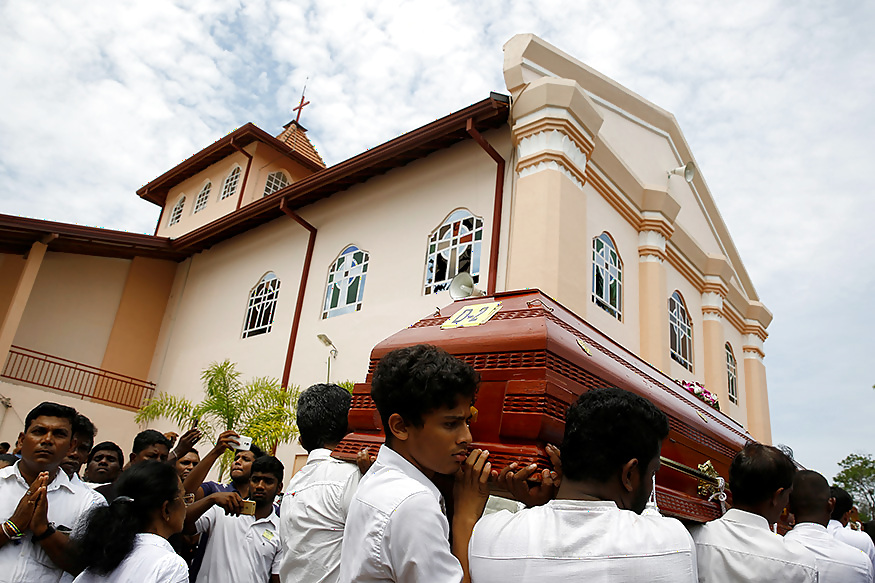
views
New Delhi: The dreadful Easter Sunday bombings on churches and hotels in Sri Lanka that killed 253 people and injured hundreds more, was the biggest terror attack in the South Asian region -- and the worst bloodshed the country has seen since its civil war ended a decade ago.
The impact was such that authorities in Sri Lanka on Thursday lowered the death toll by more than 100 to 253, admitting some of the badly mutilated bodies had been erroneously double-counted.
According to an analysis from the South Asia Terrorism Portal (SATP) dataset, no country in South Asia has crossed the mark of 200 deaths in a single terror attack.
The development comes at a time when the region, for years now, has remained in throes of violence, with the decade-long increase in terrorism in countries like Pakistan and Afghanistan claiming thousands of lives. Both the countries have lost 14,196 people to terror attacks from 2000-2017, according the Global Terrorism Database.
Erin Miller, Program Manager at Maryland's Global Terrorism Database (GTB), an open-source database for terrorism-related incidents worldwide, confirmed the enormity of this attack in terms of casualties to News18.com, stating that the “series of attacks in Sri Lanka on Sunday were the deadliest attacks in South Asia on a single day.”
This she said, can be better explained in the larger context of the overall ‘lethality of terrorism’ in South Asia, which has grown manifold over years.

But this increase, she added, is not universal; it reflects patterns of conflict as observed in Afghanistan and Pakistan. “Other locations, like Sri Lanka in particular, have been relatively peaceful with respect to terrorist violence in recent years,” Miller told News18.com.
Ajay Sahni, Founding Member & Executive Director of the Institute for Conflict Management, agrees with Miller. “This isn’t only the biggest attack in South Asia but it seems to be the largest [across the globe] other than the ones that took place in the African continent post 9/11,” Sahni said.
Terrorism in Sri Lanka
According to GTB, Sri Lanka ranks fourth in the number of fatalities recorded due to terrorism-related incidents among the South Asian countries from 1970 to 2017.
The total count in Sri Lanka stands at 15,530 after Afghanistan (39,384), Pakistan (23,822), and India (19,341). These numbers, represent the confirmed fatalities of all victims and perpetrators, who died as a ‘direct result of the terror incident’.
Among the perpetrator groups in Sri Lanka that have caused maximum deaths, the Liberation Tigers of Tamil Eelam (LTTE) remains at the top of the list. Terror attacks by the Tamil Tigers have resulted in nearly 11,000 deaths in the island nation, according to data analysis of the GTB. Here, the data ranges from 1970 to 2017.
Another terror outfit that fares in the list is the People’s Liberation Front (JVP) that caused 859 deaths. Apart from this, 1,337 deaths have been attributed to the ‘unknown’ category.
Another important aspect to look at during terrorist attacks are the places or the people that have been targeted. This often answers the question of ‘why’ during a terror attack. In the words of Sahni, there exists a larger ideological dimension behind the recent Sri Lankan bombings. “This is obviously not generated out [by] the domestic political dynamic. The target is essentially designed by the global Islamist ideology, rather than local grievances of Muslims which can be seen from the record of domestic confrontation-based violence. Whatever be the sense of grievance, this is usually between the Muslim and Sinhala majority.”
Sahni’s assessment is further validated by data. Deaths due to terror attacks at religious institutions and places of worship account for about 2.6 percent of the total deaths recorded in Sri Lanka. This category includes attacks on religious institutions (mosques, churches), religious places or objects (shrines), religious leaders (priests, imams, among others), and organisations affiliated with religious entities, excluding NGOs, businesses or schools.
On the contrary, the top target groups in the island nation, include the military, private citizens and property, the police, transportation, and the government. From 1970-2017, these groups witnessed a death toll of 5,409, 4,194, 1,756, 1,373 and 814, respectively. This group count captures the general type of target or victim in any given incident.
During these terror incidents, the type or the nature of attack can play an important role in calculating the magnitude of impact in terms of deaths. Armed assaults in Sri Lanka have taken 6,803 lives— making it the attack type that resulted in maximum deaths. This is followed by bombing/explosions, which claimed 5,924 lives, while 1,437 deaths have not been attributed to any particular type of attack.
Terrorism in South Asia
A macro study of the South Asian region reveals that Taliban or Taleban, an Islamic fundamentalist military organisation in Afghanistan, has caused more deaths than any other perpetrator group. An analysis of the GTB indicates that nearly 30,000 people died during terrorist attacks carried out by the Taliban. This includes more than 13,000 perpetrator deaths.
Terror attacks by the LTTE in Sri Lanka have been responsible for the death of over 10,000 people. Ranking third, is the Tehrik-i-Taliban Pakistan (TTP), whose terrorist attacks have killed 6,042 people. Yet, a significant number of people that have died as a result of terrorist attacks (26,202) have been recorded under the ‘unknown’ perpetrator category.

Bombing/explosions (41,490), armed assaults (39, 132), assassinations (6,701) and hostage taking-kidnappings (4,207) remain the top attacks in the region.
Between the years 1970 and 2017, the top targets of terrorism in South Asia include private citizens/property that account for 27,158 deaths, the police (22,674 deaths), the military (21,163 deaths), the government (8,893 deaths); and transportation ,which recorded 5,342 deaths.
The Easter Sunday attacks rank the deadliest after the 26-year civil war that ended in 2009, killing over 70,000 people. The war came to an end with the defeat of the LTTE, who fought for the independence of the Tamil minority group.
According to a media report on April 24, the number of foreign nationals that were killed in the coordinated blasts are 36. Of them, 11 are from India, two from China and six from the United Kingdom. Additionally, 14 foreign nationals remain unaccounted for.




















Comments
0 comment